UPSC Daily Current Affairs- 29th September 2023 | Current Affairs & Hindu Analysis: Daily, Weekly & Monthly PDF Download
GS-I
Battle of Haifa
Subject: History
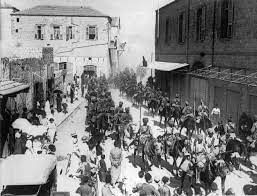
Why in News?
India and Israel commemorated the Battle of Haifa recently.
Background:-
- Every year on September 23, diplomats from India’s Embassy in Israel and Israeli government officials representing the municipality of the northern port city of Haifa gather at the Haifa War Cemetery to pay respects to the Indian soldiers who were killed and wounded in battle, on foreign soil.
About the Battle of Haifa:-
- The 23rd of September is designated as ‘Haifa Day’.
- It commemorates the city’s capture following a daring cavalry action by the 15th Imperial Service Cavalry Brigade during World War I.
- Haifa Day commemorations were initiated in 2010.
- Teen Murti Chowk in India was renamed Teen Murti Haifa Chowk in honour of the Battle of Haifa’s centenary.
Historical background:-
- The Battle of Haifa was fought during the First World War as a part of the Sinai and Palestine campaigns
- The 5th Cavalry Division comprising the 13, 14, and 15 Cavalry Brigades were tasked with capturing Haifa.
- The 15 Cavalry Brigade comprised the Jodhpur Lancers and the Mysore and Hyderabad Lancers.
- The British Empire, the Kingdom of Italy, and the French Third Republic, fought alongside the Arab Revolt, in opposition to the Ottoman Empire, the Austro-Hungarian Empire, and the German Empire.
- The Indian Cavalry Brigade, played a decisive role, leading to the capture of Haifa and Acre from the Ottoman Empire.
Significance:-
- The Battle of Haifa is a testament to the valour of Indian soldiers, including Sikhs and Rajputs, in global conflicts.
- It highlights India’s contributions during the First World War.
- It adds a historic significance in strengthening India-Israel relations.
Source: Indian Express
Challenges and Opportunities of India’s Aging Population
Subject: Indian Society
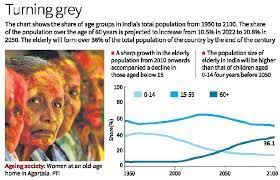
Why in News?
By 2050, the percentage of elderly individuals in India is expected to double, reaching over 20% of the total population, as per the UN Population Fund, India (UNFPA) in its 2023 India Ageing Report.
- Rapid Expansion: India is experiencing a remarkable decadal growth rate in its elderly population, currently estimated at 41%.
- Changing Dynamics: This demographic shift raises the possibility that by 2046, the elderly population may surpass the number of children (aged 0 to 15 years) in the country.
Economic Disparities among the Elderly
- Poverty Prevalence: More than 40% of India’s elderly population belongs to the poorest wealth quintile, with nearly 18.7% of them living without any source of income.
- Quality of Life Impact: Such high levels of poverty can significantly affect their quality of life and their access to healthcare services.
Understanding the Aging Population
- Rapid Growth in the 80+ Age Group: The report predicts a staggering 279% growth rate in the population of individuals aged 80 and above between 2022 and 2050.
- Gender Disparities: There is a predominance of widowed and highly dependent elderly women in this age group, a trend observed in several nations.
- Regional Variations: Life expectancy at 60 and 80 varies across states and union territories, with women generally having higher life expectancies, raising concerns about their social and economic well-being.
- Regional Disparities: States like Rajasthan, Haryana, Gujarat, Uttarakhand, Kerala, Himachal Pradesh, and the Union Territory of J&K have women with life expectancies exceeding 20 years at age 60, highlighting the need for tailored support.
Changing Sex Ratios among the Elderly
- Steady Increase: The sex ratio (females per 1,000 males) among the elderly has been steadily rising since 1991, in contrast to the stagnation in the general population’s sex ratio.
- Regional Variations: The northeast and east show an increased sex ratio among the elderly, but it remains below 1,000, indicating a male predominance. In contrast, central India saw a remarkable shift, with women outperforming men in survival after the age of 60.
Gendered Poverty in Old Age
- Inherent Gender Bias: Poverty in old age is inherently gendered, with older women more likely to be widowed, living alone, lacking personal income, and relying on family support.
- Feminization and Ruralization: The major challenges facing India’s aging population include the feminization and ruralization of the elderly. Policies must address these specific needs.
Inter-State Variations in Elderly Population
- Diverse Demographic Transition: Significant inter-state variation exists in the levels and growth of the elderly population, reflecting differing stages and rates of demographic transition.
- Regional Differences: States in the southern and select northern regions have a higher share of the elderly population, a gap expected to widen by 2036. In contrast, states with higher fertility rates, like Bihar and Uttar Pradesh, will see an increase in the elderly population share but will remain below the national average.
- Ageing Index: Central and northeastern regions are characterized by a younger demographic as indicated by the aging index.
Response to Elderly Needs during the Pandemic
- Inadequate State Aid: The report reviews the government and state authorities’ response to the needs of elderly people during the COVID-19 pandemic, highlighting that while most received state aid, it was insufficient.
- Only NGOs to rescue: Accessible public healthcare facilities were lacking, with NGOs and CBOs being the primary sources of help.
- Call for Preparedness: The report recommends a special focus on older persons in disaster-preparedness plans moving forward.
Enhancing Data Collection and Support
- Data Deficiency: The report underscores the lack of credible data on various issues related to the elderly in India and calls for the inclusion of questions concerning older persons in upcoming data collection exercises.
- Policy Recommendations: Suggestions include increasing awareness about elderly schemes, regulating Old Age Homes, and promoting in-situ aging.
- Community Engagement: Encouraging the creation of elderly self-help groups and emphasizing multigenerational households as well as short-term care facilities.
Promising Roadmap and Valuable Resource
- Government Acknowledgment: Social Justice Dept. termed the report a “valuable roadmap”. It emphasized its importance as a resource for scholars, policymakers, program managers, and all stakeholders involved in elder care.
- Data Sources: The report draws from various sources, including the 2011 Census, the 2017-18 Longitudinal Ageing Survey in India (LASI), population projections, and reports from the Government of India and the World Population Projection 2022.
Way forward
The report advocates for policies that enhance the well-being of India’s aging population-
- Foster community support
- Multigenerational living, and
- In-situ aging
Source: Indian Express
GS-II
Commission for Air Quality Management (CAQM)
Subject: Polity
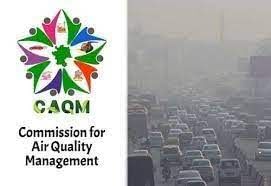
Why in News?
Recently, Punjab submitted the State Action Plan and District-wise Action Plans for tackling the problem of stubble burning to the Commission for Air Quality Management (CAQM).
Background:-
- The Action Plans commit to an overall reduction of more than 50% in paddy stubble burning incidents this year as compared to 2022.
About Commission for Air Quality Management (CAQM):-
- Establishment: 2020.
- It is a permanent body.
- The Commission has been set up for Air Quality Management in the National Capital Region and Adjoining Areas.
- It aims for better coordination, research, identification, and resolution of problems surrounding the air quality index and for matters connected therewith or incidental thereto.
- It is a statutory mechanism to coordinate and oversee diverse efforts to improve air quality in Delhi, Punjab, Haryana, Rajasthan, and UP, with the underlying remedial approach.
- CAQM will supersede all existing bodies, including the Central Pollution Control Board (CPCB), as well as state governments in matters of air pollution mitigation.
- Significance: The establishment of CAQM has the potential to address the problem of air pollution but an institution by itself is not a solution.
Historical Background:-
- The Commission for Air Quality Management (CAQM) was established under the Air Quality Management in the National Capital Region and Adjoining Areas Ordinance in October 2020.
- The parliament was not in session during this time, and an urgent need for such legislation was felt.
- The ordinance lapsed on 12th March 2021.
- Consequently, a new bill for this was promulgated. It was given the assent of both the houses and the President, following which Air Quality Management in National Capital Region and Adjoining Areas Act,2021 was passed on 12th August 2021.
- The CAQM was formed after dissolving the 22-year-old Environmental Pollution (Prevention and Control) Authority (EPCA).
- Objective: Air Quality Management in the National Capital Region and Adjoining Areas.
Functions and Power of the Commission:-
- The Commission will provide the mechanism and the means to implement in the NCR and around, the National Clean Air Programme, the National Air Quality Monitoring Programme, and the National Ambient Air Quality Standards.
- It is tasked with laying down parameters of air quality.
- The Commission has the right to prohibit activities that are likely to cause or increase air pollution in the NCR.
- The Commission can take up matters suo-motu or on the basis of complaints from individuals and organizations.
- It will submit to the Centre an annual report which will be laid before both houses of the Parliament.
- Every regulation and order of the Commission will be placed before Parliament.
- The Commission would specifically monitor measures taken by the states to prevent factors causing air pollution like stubble burning, industrial emissions, road dust, vehicular pollution, construction activities, biomass burning, and other major sources of air pollution.
Composition of CAQM:-
- Chairperson: It will have a full-time chairperson.
- It will be one “who is or has been Secretary to the Government of India or Chief Secretary to the Government of a state”.
- The chairperson will hold the post for three years or until s/he attains the age of 70 years.
- State Representatives: The Commission will also have five ex officio members who are either Chief Secretaries, or Secretaries in charge of the department dealing with environment protection in the States of Delhi, Punjab, Haryana, Rajasthan, and Uttar Pradesh.
- Experts: Three full-time independent technical members with “specific scientific knowledge and experience in matters relating to air pollution”; a technical member each from the CPCB and nominated by ISRO, ex officio.
- Civil Society: Three representatives of NGOs with experience in combating air pollution.
- Others: It will have members from Niti Aayog and several Ministries.
Source: PIB
Tackling Malnutrition in India
Subject: Polity
Why in News?
India, a nation with a rich cultural heritage and diverse population, faces a significant challenge in the form of malnutrition, particularly among its children and women.
- Under Rashtriya Poshan Maah 2023 diverse activities like Swasth Balak Spardha, Anaemia camps, and Poshan Bhi Padhai Bhi registered a record number of activities just in a day on the Jan Andolan dashboard.
About Malnutrition:
- WHO has defined malnutrition as deficiencies, excesses or imbalances in a person’s intake of energy and/or nutrients.
- The term malnutrition addresses 3 broad groups of conditions:
- Undernutrition: which includes wasting (low weight-for-height), stunting (low height-for-age) and underweight (low weight-for-age);
- Micronutrient-related malnutrition: which includes micronutrient deficiencies (a lack of important vitamins and minerals) or micronutrient excess; and
- Overweight: It includes obesity and diet-related noncommunicable diseases (such as heart disease, stroke, diabetes and some cancers).
Status of malnutrition in India:
- Global Hunger Index (GHI) 2022: India ranked 107 out of 121 countries in the Global Hunger Index (GHI) 2022.
- The GHI is an important indicator of nutrition, particularly among children, as it looks at stunting, wasting and mortality among children, and at calorific deficiency across the population.
- National Family Health Survey (NFHS-5): India’s National Family Health Survey (NFHS-5) from 2019-21 reported that in children below the age of five years, 35.5% were stunted, 19.3% showed wasting, and 32.1% were underweight.
- The State of Food Security and Nutrition in the World 2020 report: According to report nearly 51.4 percent of women of reproductive age in India were suffering from anaemia.
- Almost 50 percent of women are facing severe undernutrition and Anaemia.
Reasons for malnutrition in India:
- Poverty: It is the main reason behind the lack of adequate nutritional food which results in malnutrition.
- Sanitation and cleanliness: Most children in rural areas and urban slums still lack sanitation.
- This makes them vulnerable to the kinds of chronic intestinal diseases that prevent bodies from making good use of nutrients in food, and they become malnourished.
- Lack of diversified food: With the increase in diversity in food intake malnutrition (stunted/underweight) status declines.
- Only 12% of children are likely to be stunted and underweight in areas where diversity in food intake is high, while around 50% children are stunted if they consume less than three food items.
- Lack of food security: The dismal health of Indian women and children is primarily due to lack of food security.
- Nearly one-third of adults in the country have a Body Mass Index (BMI) below normal just because they do not have enough food to eat.
- Failure of government approaches: Although India already has following two robust national programmes addressing malnutrition but these are yet to reach enough people:
- Poor food grains through public distribution system
- Integrated Child Development Service (ICDS) and
- The National Health Mission.
Government schemes to tackle Malnutrition:
- Integrated Child Development Services (ICDS) Scheme: Aims at providing food, preschool education, primary healthcare, immunization, health check-up and referral services to children under 6 years of age and their mothers.
- Mid-day Meal (MDM) scheme: Aims to improve nutritional levels among school children which also has a direct and positive impact on enrolment, retention and attendance in schools.
- The National Food Security Act (NFSA), 2013: It aims to ensure food and nutrition security for the most vulnerable through its associated schemes and programmes, making access to food a legal right.
- POSHAN Abhiyaan
- Anaemia Mukt Bharat Abhiyan: Aims at accelerating the annual rate of decline of anaemia from one to three percentage points.
- Pradhan Mantri Matru Vandana Yojana (PMMVY):6,000 is transferred directly to the bank accounts of pregnant women for availing better facilities for their delivery.
Way Forward:
Although the government has initiated various programs to combat malnutrition the issue is still prevalent in India, especially among vulnerable populations like women and children. A data-driven, context-specific, and integrated approach is essential to address acute and chronic malnutrition effectively.
Source: Financial Express
GS-III
Manis Mysteria
Subject: Environmemt and Ecology
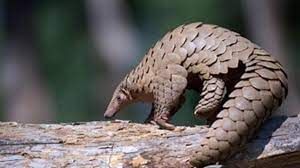
Why in News?
Adding to the eight known species of pangolins, scientists have discovered a ninth variety of this endangered mammal. This groundbreaking discovery was made while analysing scales confiscated during anti-trafficking operations. Previously, the scientific community acknowledged four species each in Asia and Africa, but this recent finding challenges the long-standing belief.
About Manis Mysteria
- It is a newly discovered Pangolin species.
- The newly identified pangolin species emerged from a detailed study of scales seized in China’s Yunnan province in 2015 and 2019.
- This new species is believed to have diverged from its Philippine and Malayan relatives approximately five million years ago.
What are Pangolins?
- They are mammals known for their distinctive appearance and protective scales.
- They are often referred to as "scaly anteaters" due to their characteristic scales and their diet, which primarily consists of ants and termites.
- Pangolins are found in parts of Africa and Asia and are known for their elusive nature and status as the most trafficked mammals in the world.
- Features:
- They are easily recognizable by their armor-like scales, which cover their bodies. These scales are made of keratin, the same protein found in human hair and nails. They are the only known mammals with this feature.
- When threatened, pangolins can curl into a tight ball, with their scales forming a protective barrier.
- Their diet consists mainly of ants and termites, which they capture using their long tongues (A pangolin’s tongue is longer than its body).
- Pangolins have no teeth; they chew with gravel and and keratinous spines inside the stomach.
- They are most active at night and are solitary creatures.
- Threat:
- All pangolin species are listed on the International Union for Conservation of Nature (IUCN) Red List of Threatened Species.
- The Indian pangolin, also called thick-tailed pangolin, is classified as Endangered under the IUCN Red List.
Source: Indian Express
India to unveil 50-year Government Bonds
Subject: Indian Economy
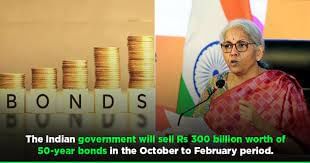
Why in News?
India is set to make history by issuing it’s first-ever 50-year government bonds and 30-year green bonds.
- These offerings have piqued the interest of insurance companies and provident funds seeking avenues to invest their long-term funds.
Why such move?
- Ambitious Target: India aims to mobilize ₹6.55 trillion ($78.73 billion) through bond sales from October to March. This includes a significant ₹300 billion allocation to the 50-year security, marking the central government’s maiden auction of such bonds.
- Natural Demand: Long-term investors, particularly insurers, find the 50-year bonds appealing due to their alignment with asset-liability management requirements.
Government Bonds in India
- Government Bonds in India, fall under the broad category of Government Securities (G-Sec) and are primarily long term investment tools issued for periods ranging from 5 to 40 years.
- It can be issued by both Central and State governments of India. Government bonds issued by State Governments are also called State Development Loans (SDLs).
- The GB interest rates, also called a coupon, can either be fixed or floating and disbursed on a semi-annual basis.
- In most cases, GOI issues bonds at a fixed coupon rate in the market.
Types:
| Fixed-Rate Bonds | Offer a fixed interest rate throughout the investment tenure, providing clarity with the coupon rate mentioned. |
| Floating Rate Bonds (FRBs) | Subject to periodic interest rate adjustments, often with a base rate and fixed spread determined through auctions. |
| Sovereign Gold Bonds (SGBs) | Allow investments in gold without physical possession, with tax-exempt interest and prices linked to gold’s value. |
| Inflation-Indexed Bonds | Adjust both principal and interest based on inflation, using indices like CPI or WPI, tailored for retail investors. |
| 7.75% GOI Savings Bond | Features a 7.75% interest rate and available to individuals, minors with legal guardians, and Hindu Undivided Families. |
| Bonds with Call/Put Option | Permit either issuer or investor to buy back or sell bonds, respectively, on specified dates, after 5 years from issuance. |
| Zero-Coupon Bonds | Generate earnings from the difference between issuance and redemption prices, as they do not provide interest income. |
Advantages offered
- Sovereign Guarantee: Government bonds are backed by the government’s commitment, offering stability and assured returns.
- Inflation-Adjusted: Inflation-indexed bonds protect investors from rising prices, maintaining the real value of their investments.
- Regular Income: Government bonds provide semi-annual interest disbursements, offering investors a source of regular income.
Limitations
- Lower Income: Apart from 7.75% GOI Savings Bonds, government bonds typically offer lower interest rates.
- Lack of Relevance: With maturity tenures ranging from 5 to 40 years, government bonds may lose relevance over time, particularly in the face of inflation.
Source: Indian Express
MS Swaminathan
Subject: Economy
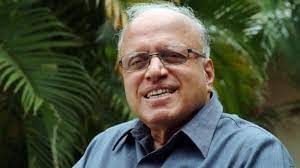
Why in News?
MS Swaminathan passed away recently.
Background:-
- Agricultural scientist Dr MS Swaminathan, known as the father of India’s Green Revolution, passed away in Chennai.
- He was 98 years old.
About MS Swaminathan:-
- Birth date: August 7, 1925.
- Birth Place: in Kumbakonam, Tamil Nadu.
- Swaminathan brought a social revolution through his policies to rescue India from famine-like circumstances in the 1960s.
- He was called the ‘Father of the Indian Green Revolution’.
Early life and education:-
- Initially, aiming for a career in civil services he switched to agriculture due to his passion, inspired by the Quit India Movement and the Bengal famine of 1942–43.
- He enrolled in the Agriculture College in Coimbatore to pursue his interest in agriculture.
- Swaminathan held various significant positions related to agriculture, both in India and abroad.
Contributions to the Green Revolution:-
- Swaminathan’s contributions to agriculture in the 1960s and ’70s transformed India’s farming landscape, ushering in an era of food security.
- He worked on enhancing crop varieties, particularly rice and wheat.
- He pioneered the development of semi-dwarf wheat varieties to boost yields.
- Collaboration with Norman Borlaug resulted in the introduction of dwarfing genes into wheat varieties.
- Swaminathan organized hundreds of exhibitions in the northern portion of the country in 1965 to teach small-scale farmers how genetically engineered grains might enable them to grow higher yields in the same land.
- These demonstrations were game-changing since the crop tripled prior output levels in the first year of the Green Revolution era.
- Swaminathan trained farmers to use these new approaches, overcoming the illiteracy barrier.
- Because of his efforts, the average agricultural production increased from 12 million tonnes to 23 million tonnes in just four crop seasons.
Roles:-
- His roles included Independent Chairman of the Food and Agricultural Organization Council (1981–85).
- President of the International Union for the Conservation of Nature and Natural Resources (1984–90)
- President of the World Wide Fund for Nature (India) from 1989–96.
- He also served as the Director General of the Indian Council of Agricultural Research (ICAR).
- He founded the MS Swaminathan Research Foundation.
- He played a vital role in developing high-yield variety seeds of wheat, which led to the green revolution in India.
Awards:-
- Albert Einstein World Science Award in 1986.
- He won the first World Food Prize in 1987.
- Tyler Prize for Environmental Achievement in 1991.
- Planet and Humanity Medal of the International Geographical Union in 2000.
- He was conferred with Padma Shri (1967), Padma Bhushan(1972), and Padma Vibhushan(1989).
Source: AIR
|
63 videos|5408 docs|1146 tests
|
FAQs on UPSC Daily Current Affairs- 29th September 2023 - Current Affairs & Hindu Analysis: Daily, Weekly & Monthly
| 1. What happened in the Battle of Haifa? |  |
| 2. What are the challenges of India's aging population? |  |
| 3. What is the Commission for Air Quality Management (CAQM)? |  |
| 4. How is India tackling malnutrition? |  |
| 5. What is Manis Mysteria? |  |
















